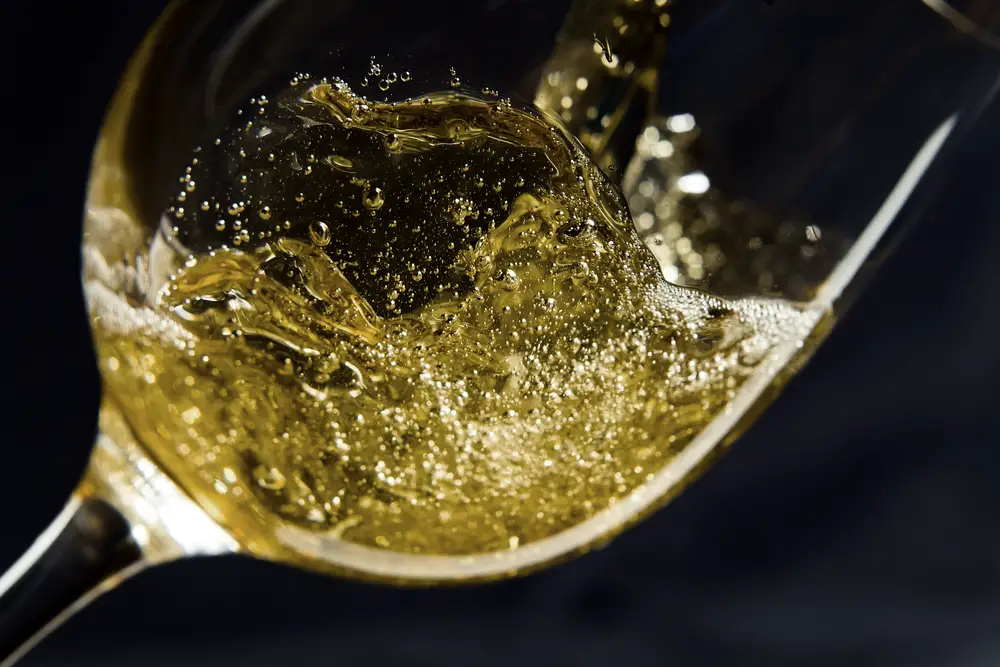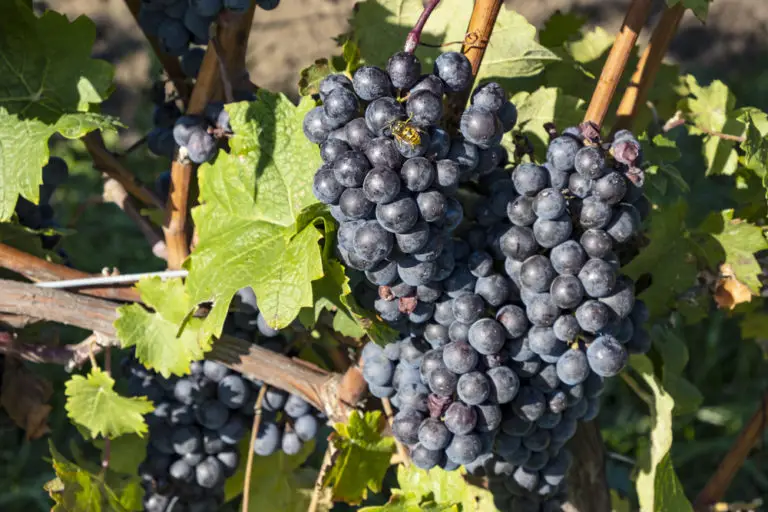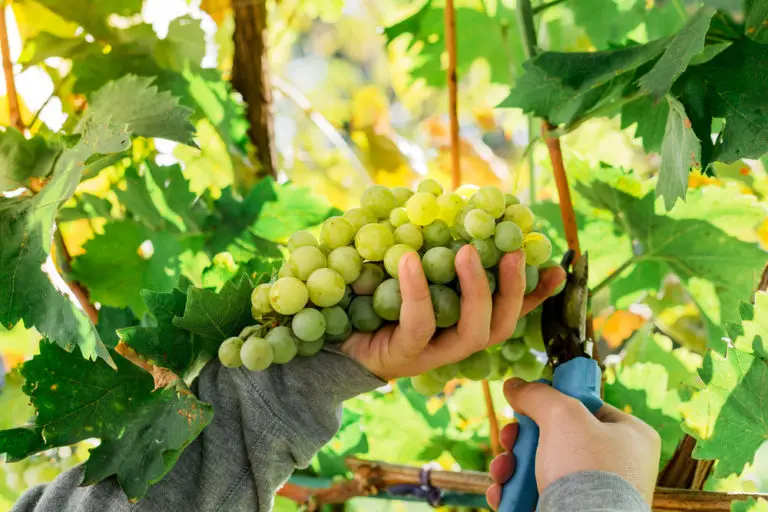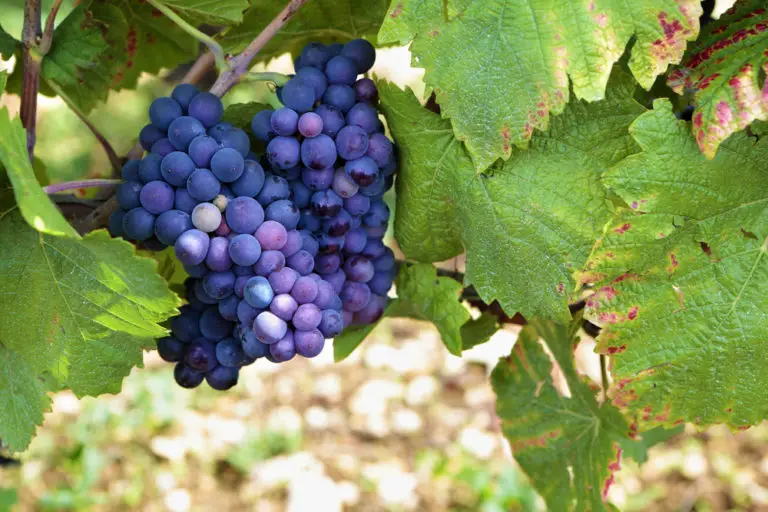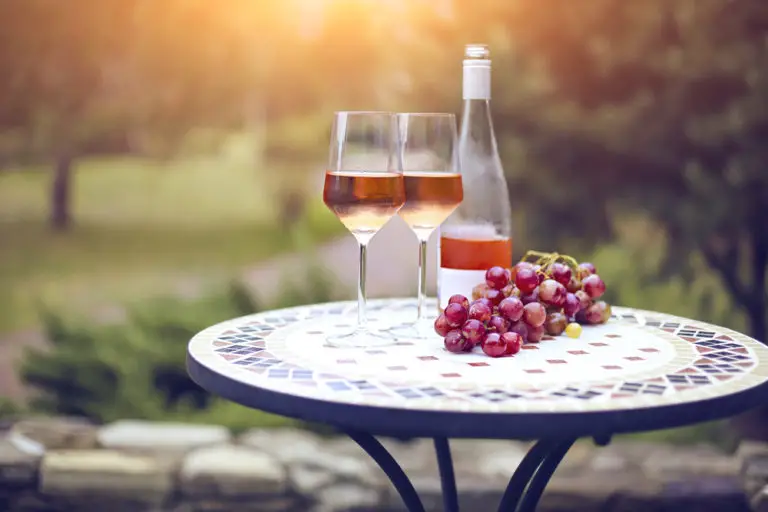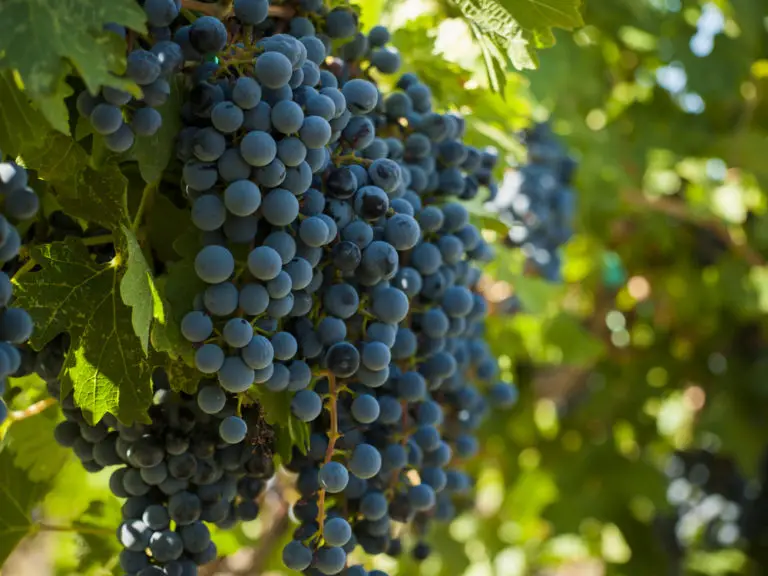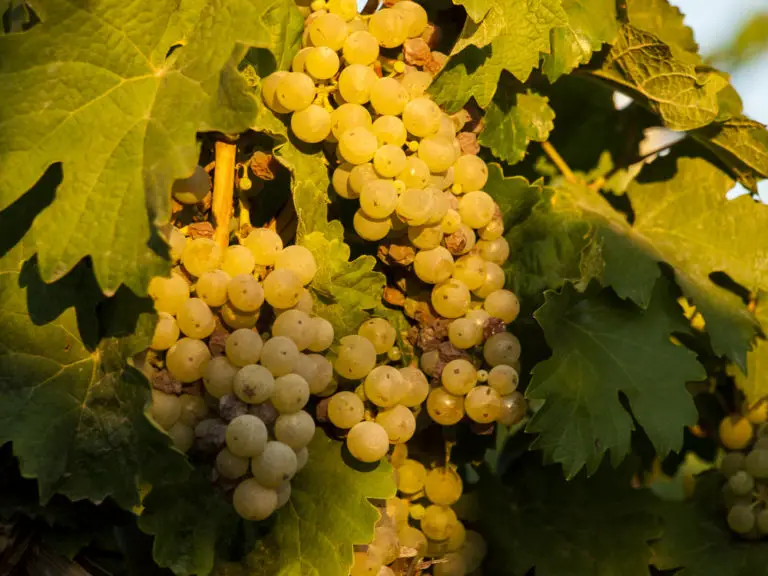White Wine for Beginners (Everything You Need to Know)
Everyone has heard about white wine. But do you know that white wine is not necessarily made from white grapes, sometimes they are also made from red grapes? The only difference between the two wines is the duration of skin contact during the fermentation process. Let us find out more about it.
- What is White Wine?
- White Wine Characteristics
- White Wine Varietals
- White Wine’s Ageability
- How Should White Wine be Served?
- How is White Wine Made?
- History of White Wine
What is White Wine?
White wines are generally dry wines having hundreds of varieties grown all over the world. You can also find sweeter versions of this wine, in which the winemaker interrupts the fermentation process.
The production method of white wine makes it different from other kinds of wine. Winemakers remove the skin from grapes during the fermentation process so that it does not influence the color of the juice.
It is known for helping with weight loss, disease prevention, protecting the heart, and keeping the lungs healthy. If it is drunk in excess, it can create problems like liver disease and cancer.
The best white wine for beginners are Pinot Grigio, Moscato d’Asti, Riesling and Sauvignon Blanc. Some other popular wines are Torrontés, Vinho Verde, Gewürztraminer and Grüner Veltiner. Whether you are a sweet or dry wine fan, there is a perfect white wine for everyone.
White Wine Characteristics
White wine basics include knowing its characteristics. It helps you with selecting the best ones with the most sophisticated combinations.
White wine characteristics can be light, medium, or full-bodied based on the production method and the variety of grape used. White wine flavors are generally lighter and fruitier than their red counterparts and contain few tannins. They are rarely aged in oak barrels and have much less imposing characteristics and flavors on palette.
Good white wine flavor profiles will be fruity like pear, apple, peach, apricot, melon, and tropical fruit. In addition, it can have candy-like aromas of vanilla, butterscotch, honey, and almond.
Depending on the types of white wine grapes, the aftertaste and finish should be less intense and lighter than red wine. It gives a mellow finish towards the end.
Best wines would have a light flavor, aroma, presence, and finish. Remember that the white wine characteristic must be agreeable and not empowering.
White Wine Varietals
There are numerous white wine varieties from various parts of the world like Italy, France, and Germany that are most commonly used for producing white wines. We recommend everyone to try all the different white wines to experience different flavors and aromas. You might find repeat notes of crispness, salinity, florals, and tender stone fruit.
Sweet and Semi-Sweet
Some wines can be sweet while others can be slightly sweet; everything depends on the different types of white wine. The wine that comes from residual sugar, as a result, is referred to as sweet white wine. Some German and Italian winemakers produce exotic sweet white wine. Let us take a look into different sweet and semi-sweet white wine descriptions.
Riesling
Known for its fragrance, Riesling is yet another white wine for beginners whose grapes are native to the Rhine valley in Germany. It is also produced in countries like Russia, Italy, Australia, and South Africa. This wine usually tastes fruity like citrus fruit, apple passion fruit, and a mineral or floral taste. Ideally, it should be served at 47°F and goes well with oriental dishes.
Gewürztraminer
The Gewürztraminer is the highest quality and oldest wine in the world. Noble and heavy white wines are produced from the grape variety. It originally came from South Tyrol, Germany. The rose scent of the Gewürztraminer is very concise. Other smells and flavors found are honey, violets, lychee, kumquat, bitter orange, passion fruit, and marzipan.
Moscato
Moscato is a mild-sweet white wine from Italy made from the Muscat grapes varietal. It comes from the Asti region and is known for its lightness, sweetness, and typical nutmeg taste. It has the aroma of yellow fruits and fine acacia honey. On the palate, its fruity and spicy notes are accompanied by fresh and harmonious acidity.
Torrontés
Torrontés is a medium white wine that is the most aromatic and richest white wine in Argentina. It has an aroma of the powerful grape variety nutmeg, orange blossom, jasmine, peach, and citrus fruits. The lush and intense scent of a Torrontés arouses sweet expectations, but the white wines are usually made dry. It amazes with lasting freshness, emphasizing a lot of fruit and liveliness.
Herbaceous
Herbaceous are typically light-bodied and have “green” and herbal aromas of jalapeño, grass, gooseberry, or bell pepper. Herbaceous qualities are usually found in slightly unripe Cabernet Franc, Merlot, Colombard, and Cabernet Sauvignon. It is a food-friendly wine that pairs well with green veggies, herby sauces, salads-topped with tangy cheese (especially goat), and sushi.
Sauvignon Blanc
The wines of this grape variety grown around the world taste lively and intense. In Europe and South America, they are often tart and fresh with notes of freshly cut grass and pome fruit. Sauvignon Blanc is an excellent accompaniment to fish, also as sushi or white meat.
Grüner Veltliner
The Grüner Veltliner is considered the national variety of Austria. With the right yield regulation, the winemaker receives excellent aromas of white pepper and tobacco. Now and then, notes of citrus or peach can also be felt. It rounds off every dish harmoniously, whether with honeydew melon with ham, fish, or poultry or with difficult ingredients such as asparagus or artichoke.
Vinho Verde
Vinho Verde is a light, fresh and elegant wine with fruit aromas (citrus fruits, pome fruits) and mineral origin. It is a Portuguese wine produced in the area between the Douro and Minho rivers. It goes well with light dishes like salads, fish, and seafood. You can also drink it just as an aperitif.
Vermentino
The white Vermentino grape variety is found in Italy, the Mediterranean islands of Sardinia, and Corsica. It produces strong, golden-yellow wines with elegant herbal notes, tropical fruit, with strong acidity. This wine has the dominant aromas of ripe citrus fruits and apples, pineapple, quince, and papaya.
Light and Dry
A wine is considered dry when a majority of the sugar is converted, and residual sugar is less than one percent of the juice’s volume (four grams of sugar per liter). These white wines are more delicious when chilled to the correct temperature and served with foods that complement their flavors and aromas.
Pinot Grigio
Pinot Grigio is yet another kind of white wine. This white grape variety is mainly grown in Friuli, in the Emilia-Romagna, and Lombardy. It is a harmonious wine with a strong golden yellow color and little acidity. It has the aromas of pears, quinces, apples, peaches, and citrus fruits. It makes the perfect aperitif wine and extremely versatile accompaniment to dishes like seafood, vegetables, poultry, matured cheese, and pasta with cream sauces.
Chenin Blanc
Chenin Blanc is an old white grape variety that has its roots in France. The taste palate entices turmeric and saffron, plums, and honey flavors. Young wines often exude a smell and taste of green apples and quinces, paired with pears and flowers. It is headstrong and sometimes takes a lot of time to develop well.
Grenache Blanc
Grenache Blanc produces fragrant, full-bodied, and soft white wines that can be drunk young. It is mainly grown in southern France and northeastern Spain (as Garnacha Blanca). The taste is of subtle fruit and fine herbal spices, and it has relatively low acidity. These wines go perfectly with grilled fish, Mediterranean vegetables, or crustaceans.
Chablis
Chablis is a dry white wine with a characteristic golden robe with green nuances. This Burgundy wine has mineral aromas as it is matured in steel tanks and has woody notes from the vinification in the barrel. In addition, connoisseurs appreciate it for its firm, mineral character, and relatively soft taste.
Bold and Dry
The next category in the guide of white wine 101 is full-bodied or bold white wines. These white wine styles have more than 13.5% of alcohol content and more complex flavors. Chardonnay, Viognier, and Trebbiano are some of the examples of white wines that are bold and dry wines.
Chardonnay
Chardonnay wine is one of the most common white wines, having an excellent range of aromas, depending on the soil on which it grows and whether it is grown with or without the influence of wood. It has a subtle creaminess, softness, and fruity-fresh aromas of apple, citrus, exotic fruits such as banana and pineapple.
Sémillon
Sémillon is a widespread white grape variety that has its origins in France. The golden-yellow wine turns pink when fully ripe. The wine smells of honey and linden and has a more aromatic taste of apricot, peach, honey, and candied fruit. It pairs well with fish, vegetables, poultry, and cheese.
Trebbiano
Trebbiano is a fresh, single-origin white wine with a fruity, mild taste that winemakers across Italy produce. It tastes rather subtle but has a pleasant acidity. It has fruity flavors of apricots, apple, melon, or pineapple, and delicate aromas of spices and honey. It has a light minerally aftertaste.
Viognier
The Viognier is a unique variety in all its characters. It starts with the flavors of flowers and spices such as violets, lily of the valley, and musk and combines with citrus fruits, pears, apricots, peaches, and nectarines. It pairs well with fish, lobster, and Norway lobster and with creamy sauces.
White Wine’s Ageability
The next important thing in the guide to white wine is understanding its age-ability. White wines do not age as long as red wines do. It is because they are not fermented on their grape’s skin. This difference between the process of winemaking reduces the number of tannins and therefore reduces the aging ranges.
Plus, some wines have lower acidity. Acidity allows the chemical interaction that is responsible for spoiling the wine. So, it is a crucial factor of wine age-worthiness.
The best winemakers are worried that keeping them for years will evolve the flavor. And it is ridiculous, as many wines are made to be enjoyed quickly. Airworthiness has little to do with the color, rather it determines and balances the style, acidity, and concentration that will improve and gain complexity over time.
How Should White Wine be Served?
As a part of this white wine guide, we would like to share tips to serve white wine ideally. Of course, it depends on individual preference and the different types of white wine but using the correct stemware, temperature, and food pairing will only enhance white wine taste.
Stemware
White wines are best served in a narrower glass, as it helps in preserving the fruity flavors by keeping them at optimal temperature. These glasses are known as the traditional white wine glasses and have a tulip shape. These wine glasses are perfect for the one with a low body and high acidity as it allows you to enjoy the full breadth of the acidic qualities.
Temperature
The best way to enjoy the white wine is to chill it. It lifts the acidity and aromas of the wine. Although, you should also make sure that it is not too chill, as it can mute the flavors. Depending on the type of wine, it should be ideally served at a temperature between 45°F to 60°F.
Food Pairings
It would be challenging to share a generalized list for pairing food with different types of white wine. But when it comes to white wine, most of them could be paired up with food like poultry, skin, crabs, lobster, appetizers, salads, mild cheese, and fish. As a thumb rule, lighter the food, lighter should be the wine.
How is White Wine Made?
Harvesting
White wine can be made from white or red grapes. In the first step of winemaking, these are picked from the vines and sorted according to quality. Then the individual berries are separated from the stem and are put in the winepress. The separation of grapes from the stem ensures that different aromas do not impact wine.
Pressing
This step ensures that the grape juice is released from the individual grapes. The skins and seeds of the grapes are left behind and used in other ways (like fertilizer for the vineyards). Only the grape juice, also called must, is then poured into large stainless steel tanks and fermented.
Fermentation and clarification
During fermentation, the white wine ingredients are converted into acids, gases, and alcohol. The sugar in grape juice, which consists of glucose and fructose, is converted into alcohol by yeast bacteria. These bacteria multiply and produce alcohol as a by-product.
If the fermented sugar is completely converted into alcohol, the yeast bacteria die, and the grapes become a dry white wine. Depending on the desired degree of sweetness of the wine, this process is influenced and stopped by the winemaker. Sweet wines, therefore, contain less alcohol than dry wines.
However, the maximum alcohol content of the fermentation method is around 15%, here the yeast bacteria dissolve completely regardless of the remaining sugar content. Once the fermentation process is complete, the wine is stored in large tanks in a cool place for a short time so that it can settle and stabilize.
The excess tartaric acid crystallizes in the wine and sinks to the bottom of the tanks as tartar. It is separated from the wine and does not go into the bottles. After separating the wine and tartar, the wine is clarified.
The clarification of wine is usually made with bentonite, a clay made of silicon and aluminum oxide. It ensures that enzymes such as proteins are released from the wine and also sink to the bottom. These would allow the wine to curdle at warmer temperatures and thus lead to the formation of lumps and streaks in the bottle.
Bottling
After the wine has been clarified, it is now completely processed and can be bottled. The white wine produced can be put on sale shortly after bottling.
Sale
Quality wines can be stored for 5 to 10 years, depending on the variety. During this time, the wine develops and creates additional aromas. Most quality wines are designed to be consumed within 2 to 4 years.
The white wines go on sale in the year of production. Storage for over five years is something for an excellent wine experience.
History of White Wine
The history of white wine starts in the regions of the world where Georgia is located today. Many even think that wine has its origins in the Mediterranean. Who and when invented wine or produced it for the first time is not known.
Findings of fossils and man-made berries and vines that go back as far as 8,000 years show that this culture existed much earlier. Such old relics and evidence of active viticulture have been found in Georgia, Turkey, and Iran, as early as 5,000 BC.
At that time, the wild vines and grapes were grown, but humans could not wait till the plant was mature. Later, when people knew more about the course of the day and could assess the climate in the year, wine was grown at better times.
The current state, therefore, proves that the wine must have come from this time and region. Through fossil finds, the wild vines can be traced back to a time of 80 million years ago. However, evidence from the early Neolithic shows that the not yet sedentary peoples processed the berries further. Presumably, the juice was made from it. Only when the people settled down and stayed in certain parts of the region to live did they begin to grow wine.
FAQ
How is a white wine made?
In simple words, winemakers harvest the desired grapes, press the juice out and remove the skin, ferment the juice using yeast and then leave it for maturing.
Is chardonnay sweet or dry?
Chardonnay is a green-skinned grape variety vastly used in the production of white wine. It is dry.
How to drink white wine?
Hold the glass from the stem, swirl the glass to oxygenate the wine, then take a sniff of the glass of wine before drinking it.
What is the difference between white and red wine?
Generally, the red wine is allowed to be fermented with the skin, while the skin is removed before fermentation in white wine.
Which white wine is the sweetest?
Sauternes, Tokaji, and late-harvest Riesling and Gewürztraminer are only some of the top-rated sweet white wines in the world.
What are white wine varietals?
Some examples of white wine varietals are Chardonnay, Sauvignon Blanc, Riesling, Pinot Gris, Semillon, Gewurztraminer, and Chenin Blanc.
What should I look for in white wine?
The perfect white wine should have the best combination of smell, balance, depth, and finish.

